Others Are Called Great To Many Fanciers Bea Godsol Was The Greatest Of Them All
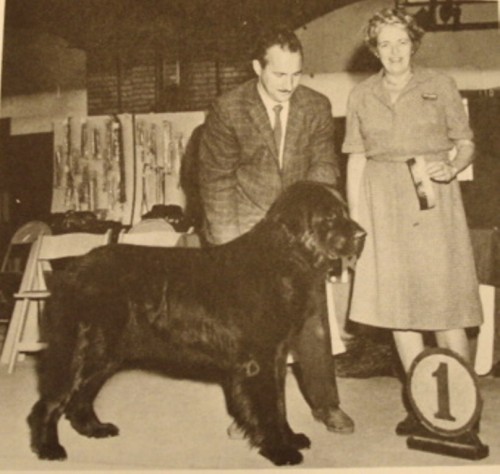
- Al Levine showing to Bea Godsol
From the archives of The Canine Chronicle, April 2012
By Amy Fernandez
Truly gifted judges are few and far between. Decades later, their remarkable ability remains the benchmark of excellence for the sport of purebred dogs. They confidently, efficiently sort through large mediocre classes, discover a diamond-in-the-rough presented by an uncertain novice, and fearlessly reward the potential greatness of a puppy. Most importantly, they act on the courage of their convictions. To many fanciers, Bea Godsol was the greatest of them all. “She was a lovely lady and really knew dogs,” says Bob Bartos, whose professional handling career commenced in the 1930s when Bea first stepped into the ring as a judge. “She was probably the best woman judge we’ve ever had. Others are called great, but I have seen them all.”
Bea’s formidable reputation as a judge has overshadowed her substantial contributions in many facets of purebred dogs. Along with an unerring eye for type, she had an uncanny ability to sense undercurrents of change in the dog world. Bea and her husband Major played key roles in many aspects of the sport we now take for granted, like AKC field reps and obedience competitions. At the same time, she fiercely protected the quality and tradition at the bedrock of this sport. Everyone who knew her agrees that she was one-of-a-kind.
“She was an exciting, wonderful person,” says breeder, judge, and author Rick Beauchamp. He met Bea in 1962 shortly after moving to California and describes her as an incredible mentor. They not only talked dogs, Bea recounted tales of her teenage escapades. “She came from considerable East Coast wealth, and was quite a hot number when she was young.” He shares one of his favorite stories to illustrate her adventurous nature. “She was dating some guy who had a private plane. Her parents hated the fact that she was even seeing him, and forbade her to get into that plane. Of course, the first chance she got, she went up in that plane. Well… they ended up making an emergency landing in the Florida everglades.” Police and reporters converged on the scene. Although no one was injured, Bea’s family was mortified by the resulting notoriety courtesy of newspaper gossip columns.
Beauchamp admits that he was enthralled by her fascinating life. “Before she married Major, she was married to one of the Hilton boys. Between them, there was a lot of money. Their lifestyle sounded so glamorous, sort of like F. Scott and Zelda Fitzgerald.” By any measure, Bea’s life qualified as intriguing. However, that’s not what enthralled Beauchamp. “She always commented that she learned so much from me, and I was always blown away by that. I was just a kid. She was so knowledgeable, but at the same time, so humble about her knowledge.” He counts himself lucky to have had a mentor of this caliber, and he is not alone. Genuine dog knowledge that was once considered available to anyone willing to learn is a rare commodity in today’s dog world. The handful of experts who benefited from Bea’s expertise definitely stand out from the crowd.
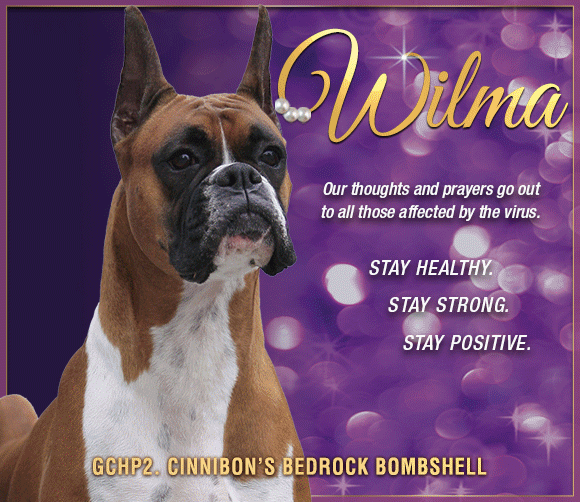
This includes Michael Canalizo who has spent a lifetime in the sport. Formerly the handler of Grandeur Afghans, he is now Director AKC Event Management. He says, “Being the persistent type of fellow I was growing up, there was never an inquest on judging that didn’t somehow connect back to Bea. Many of the legendary quotes still held as gospel today first came from Mrs. Godsol’s lips.” Bea not only had a very good eye for dogs, but she also had a sixth sense about recognizing talent. Most of all, she was a great teacher. And she did more than teach her protégés, she instilled them with confidence and direction. One of these lucky students was Frank Sabella, who met Bea in the ‘60s when he was handling professionally. He acknowledges that Bea helped him tremendously when he retired to begin his judging career in the early 1970s. This included coming to the first show he judged. Driving back to the motel after the show, she listened as he analyzed and agonized about his decisions. Finally, she told him, “never think of anything you do in the ring as a mistake, think of it as a learning experience.”
Early in his judging career, Sabella accepted an invitation to judge Toy and Non-Sporting breeds at an Australian show. He didn’t realize that this included several breeds in the AKC Working Group such as Danes, Boxers, Rotties, and Sammies. “I hadn’t shown these breeds very much and I wasn’t very familiar with them.” Sabella panicked and called Bea for advice. “She said, ‘don’t worry. Come down here and spend a week with me before the show.” She gave him a crash course on Working breeds and shared a few secrets. This included her most memorable quote, “All dogs have faults; the great ones carry them well.”
“She said, ‘Whatever you do, don’t take a long time. Don’t stare at them, and don’t keep moving them down and back. If you can’t make up your mind, send them around the ring one more time and don’t even think about it, just do what your heart says.’ I remembered every word of her advice and I had the greatest write up in the Australian dog press after the show. They said, ‘not since Percy Roberts came to Australia has there been a judge as knowledgeable’, and I was judging breeds I had never touched before.”
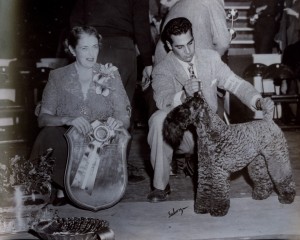
- One of the Late Ric Chashoudian’s very special wins under Judge Bea Godsol, a Best In Specialty Show.
Like many breeders and judges famed for their unerring eye for quality, Bea’s background included extensive experience with horses and livestock. Before relocating to California, she rode with the Meadowbrook Hounds on Long Island. The Meadowbrook Hunt Club, named for its famous pack, hunted foxes near Belmont Park on Nassau County’s North Shore. Founded in 1881, it was widely regarded as one of America’s best hunts. Described as country riding in the rough, it began with a brisk ten-mile gallop over the (then uninhabited) Hempstead Plain. Riders continued at this breakneck pace through neighboring farmland bisected with four to seven-foot fences. The rattling pace combined with more than 60 jumps added up to plenty of casualties. It was euphemistically described as a sport for the stout-hearted. Participants had plenty of opportunities to test their courage. They also developed a respectful appreciation for top quality horses and hounds.
After moving to their California ranch, Bea and her second husband Major bred top winning Suffolk sheep. In many ways, the Suffolk’s history runs parallel to Newfoundland development. It was the product of crossbreeding tractable Southdowns with rugged, hardy half-feral Norfolk Horned, and became a recognized British breed approximately 1810. In 1886, the English Suffolk Society began documenting and promoting it and it gained a foothold in America in the 1920s.
Bea’s Coastwise Newf breeding program reflected the rigorous standards and objective methodology derived from her experience with livestock and horses. She maintained meticulous records and utilized phenotype, performance records, and progeny data to evaluate the genetic potential of her stock. Her philosophy is summed up in the often reprinted Coastwise Kennel Code:
To pay special attention to bitches
To study grandparents rather than parents
To keep careful breeding records
Not to rush to every new stud with a name
To try and read a pedigree by breeding facts, not names
To put away all culls and weaklings at birth
Never to sell or give away an excessively shy or nervous dog
Never to sell any dogs the kennel cannot be proud of
To make good on any dog sold that may not turn out satisfactorily
To breed dogs for intelligence and disposition as well as physical perfection.
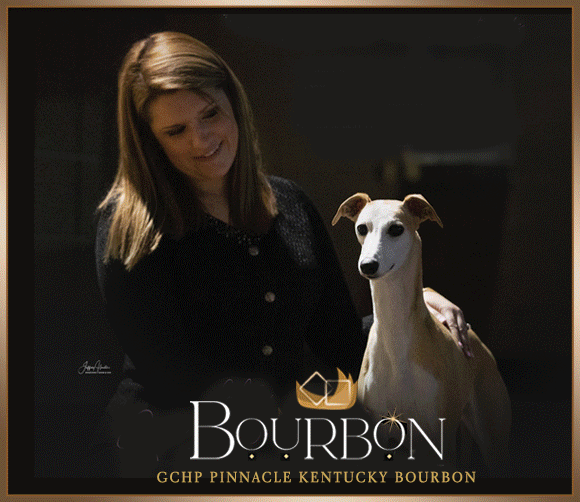
Coastwise ranked among the most active West Coast kennels throughout the 1930s and 1940s. The 1938 AKC Blue Book of Dogs reported that the Hiltons, “have owned more than three hundred dogs to date.” Bea enjoyed great success in German Shepherds, Goldens, Shelties, and Dandies, but her Newfoundlands made history. “The Hilton’s from Coastwise swept all opposition aside in Newfs,” proclaimed Kennel Review in September 1937. “These superb specimens surely deserve more consideration in the groups than they are getting.” Bea ventured into Newfs in 1932, when the breed garnered virtually no consideration in the show ring. It had lost ground since WWI, and by 1928 it ranked as the least popular AKC Working breed. Bea not only raised the quality bar, but she also took the reins to reestablish its image as a true working dog rather than a quaint, Victorian curiosity.
Bea’s Coastwise breeding program was founded on Waseeka stock, the kennel primarily responsible for reversing the Newfoundland’s downward spiral in America. Like Bea, Waseeka’s founder, Elizabeth Loring was an East Coast aristocrat, accomplished rider, and devoted animal lover. Cultivated, urbane, and dignified, Loring heralded from Beacon Hill. One of Boston’s most exclusive neighborhoods, it was home to luminaries like Oliver Wendall Holmes, Robert Frost, Henry Cabot Lodge and her illustrious ancestor Ellis Gray Loring. Loring’s first Newf, Chieftain’s Brucie, arrived as a graduation gift in 1922. When Brucie died five years later, her dedication to the breed was unwavering. She consulted Britain’s premier breeder, May Van Oppen, and packed her bags for a 1927 tour of U.K. kennels. A few months later, she returned with Harlingen Jess of Waseeka, the first of many outstanding imports. “Of late years several of the best dogs have gone to the U.S.A. Miss Loring of Boston purchased Ch. Seagrave Blackberry, also Seafarer, which soon became a full champion out there. Harlingen Neptune and Harlingen Jess also went to the same kennel. The sale of the young and promising son of Harlingen Cedric added another loss to the breed in England. All these dogs have gone to build up the largest and finest kennel of Newfoundlands in the U.S.A.” (Hutchinson’s Dog Encyclopedia) Her most influential imports were offspring of the great English champion Siki, such as Ch. Harlingen Neptune of Waseeka. Ch. Siki, Britain’s top winner, and top producer, whelped in 1922. Loring was not the first American breeder to import Siki stock, but she certainly imported the most. By the 1950s every important American bloodline traced back to this dog.
Loring also carved out an impressive reputation in English Setters and Pembrokes. By 1929, Waseeka had evolved into one of the massive East Coast breeding programs that left an indelible imprint on so many breeds. Her kennel was built on an undeveloped portion of the family’s vast Ashland, Massachusetts estate outside Framingham. Describing its layout for the AKC Gazette in 1932, Fredrick Jones noted that it is possible to ride or walk 20 miles without crossing a highway. Waseeka’s Newfs were shown 16-20 times per year, which qualifies as an exceedingly modest show schedule by today’s standards. However, the majority of important shows were still concentrated on the East Coast and Waseeka was generally represented by an entry of 6-10 dogs. For instance, in 1938, Waseeka accounted for 106 of the 245 Newfs entered at AKC shows. Within 12 years, Waseeka was home to 10 import and 20 homebred champions. They won the breed ten consecutive times at Eastern Dog Club in Boston, and nine times at Westminster. And this was when BOB was considered the premier award rather than a stepping stone to ratings. Loring also set records in group and BIS competition, going head to head with formidable contenders of the era like Cosalta and Giralda Farms.
Fort Robinson, Nebraska
In 1942, Fort Robinson, NE became one of five K-9 Corps reception and training centers. The base was fully staffed with a kennel, vet clinic, as well as thousands of decommissioned cavalry horses destined to meet their fate as dog food. By 1944, Fort Robinson’s facilities has been enlarged to house 1800 dogs at a time for 3-4 week training programs for the Army, the Army Air Corps, Navy, and Coast Guard. It was also the site of the Army’s experimental wolf hybrid breeding program. By 1945 it was the country’s largest military dog program, training over 2000 dogs at a time. Over 14,000 dogs were eventually trained at Fort Robinson, along with several thousand horses and pack mules. The Army also discovered that dogs worked best for familiar handlers, and policy was revised. Fort Robinson trained thousands of expert dog handlers for deployment as dog/handler teams.
Loring’s champion import, Seafarer, announced her arrival by taking BIS at Middlesex in 1930. Seafarer went on to win 36 Breeds, 16 groups, and 3 BIS. In 1931, Waseeka captured best brace, best team, and the Working Group at Westminster. Her next star, Ch. Waseeka’s Sea King won 42 breeds, 13 groups, and BIS at Ladies in 1933. That year he was also shown with Seafarer to win BIS brace at Westminster under Geraldine Dodge. Waseeka again took best working brace and best working team at Westminster the following year. Loring’s winningest Newf brace may have been Ch. Seafarer and Ch. Waseeka’s Wayfarer, another import that also became a multiple group winner and one of her most important foundation dams.
Waseeka not only dominated the ring for two decades, it provided the foundation for the most important modern American Newfoundland breeding programs. Loring’s kennel profile in the AKC Gazette noted that, “She not only has tried to broadcast the colorful story of the Newfoundland so that dog-minded people would take an interest in the breed, but she also has carried her effort through to a more practical extent by seeing that newcomers have started off with stock of a quality high enough to insure success.” When Bea decided to venture into Newfs, Waseeka was the obvious choice. It not only provided the start of her breeding program, her relationship with Loring had a tremendous impact on her future direction in the sport. In 1932, the first Waseeka acquisitions David and Skipper, arrived at Coastwise Kennels, Skipper became a group winner and important stud, but her next Waseeka arrivals, Mark Anthony and Cleopatra, made history.
Bea was not only bitten by the dog show bug, she possessed the insight and creativity to adeptly promote Newfoundlands in a wide range of venues. In 1938, five year-old Ch. Mark Anthony of Waseeka, CDX, known as Tony, qualified for inclusion in AKC’s Blue Book of Dogs. Although it was originally intended to be an annual to showcase outstanding dogs, this 159 page hardbound book became their only foray into commercial publishing. Dogs were included based on their “excellence in the field, ring, or on the track.” Tony qualified in 1937 in a way that was so new; it didn’t even bear mention in this description. He became the first Newfoundland to earn a CD, and the breed’s only CDX qualifier at that time. These were not the only talents described in his profile, “Trained to carry a knapsack, he would travel two miles daily for mail and groceries. Broken to cart and also used in the Newfoundland sled team of Gladys Shipman’s Dude Ranch for Dogs. His rescue work at Big Bear Lake in California was also the subject of a 1936 Universal Pictures newsreel Coastwise Life-Saving Corps.” Later that year, group winner Ch. Cleopatra of Waseeka scored of 97 out of 100 in one of AKC’s first obedience test, to earn the Pillicoc Trophy, awarded annually to the highest scoring CD titleholder.
Bea’s Personal Taste of the Newfoundland’s Lifesaving Work
Ch. Coastwise Steamboat Bill not only became a top producer, he dramatically reinforced the Newfoundland’s lifesaving reputation. The Coastwise Lifesaving Corps had already been featured in a newsreel. Bea got a personal taste of the breed’s legendary ability when her car overturned on a mountain road. Thrown into a snow bank, Barry lay next to her in the snow providing comfort and warmth for several hours. Even after help arrived he refused to leave her side until she ordered him to guard her coat. Her misadventure has become a part of Newf lore.
The magnitude of this achievement can be gauged by examining it within historical context. Bea and Loring were converts to the sport long before AKC sanctioned it and Bea was on record predicting that, “obedience tests started in the East will soon sweep the country, and what more fitting medium is there for showing off the ability of these dogs? Anyone who has gone into the show ring with a hundred pounds of untrained puppy on the other end of the leash appreciates the difference between showing a dog who will pose and heel at command, and obedience tests seem to be a step in the right direction toward this end. A Newfoundland, while not as alert as a Shepherd or Doberman, is very willing to learn and never forgets his lesson once he understands what is required of him.” (Dogdom Monthly, July 1936)
In Europe, obedience had been promoted by training clubs since the early 1900s and demonstrations were popular features at shows. The sport developed some momentum in America after WWI thanks to GSD and Doberman fanciers who founded working breed clubs similar to those in Germany. But Helen Whitehouse Walker, of Bedford Hills NY, pushed it to mainstream acceptance in this country. She became familiar with obedience while traveling in England to procure stock for her famed Carillon Standard Poodle kennel and began promoting it as something that could be taught to any breed by any owner. Thanks to her efforts, it became an official AKC event in 1936. That year, 18 obedience tests were held in conjunction with shows and 33 dogs, representing nine breeds, earned CD titles. Mark Anthony claimed a place for Newfs. In 1937 it shifted into high gear. Almost 300 dogs representing 48 breeds competed in 70 obedience tests and AKC awarded 85 CDs,20 CDX, 4 UD titles.
Bea not only utilized obedience to promote her Newfoundlands, she created opportunities for fanciers to get involved via training classes at her Canoga Park ranch. In March 1937, she wrote in Dogdom Monthly, “What we believe to be the first meeting of a Novice obedience class in Southern California took place at the Coastwise Kennels.” In 1938 she became president of the California Training Class, the first on the West Coast and the third in the nation. AKC also implemented an approval system for obedience judges in 1936. Major Godsol became one of 15 approved in 1938, and the first all-rounder approved to judge obedience. Despite this fanfare, obedience was slow to catch on. Dog training was generally considered a professional secret that could be imparted only to a few breeds. For the average owner, unmanageable dogs were the rule, not the exception.
This casual attitude changed abruptly in 1941 when America’s entry into WWII marked the beginning of our military dog training programs. In Europe, training schools cranked out thousands of top class police and military dogs working dogs annually. However, it was strictly an experimental oddity in America until the Secretary of War directed the Quartermaster General to implement a plan to produce thousands of war dogs with specialized skills. This was a tall order considering that the military had no resources to procure, evaluate, or house dogs, no formal programs for specialized sentry, tactical, attack, search and rescue, or mine detection training. Nor did it have experts capable of developing or teaching these techniques.
The Army scrambled for recruits with practical experience handling and training dogs. The cream of AKC handlers and judges eventually found themselves stationed at Fort Robinson, Nebraska. “When he was the CO of the Canine Corps at Fort Robinson, Major Godsol met most of the handlers” says Bartos. Among others, this included Phil Marsh, Charles Hamilton, Seth Campbell, Jerome Rich, Ben Burwell, Ron Wanzer, and Bob Gorman. Bartos adds that, “Major Godsol let Gorman go back East when he won BIS at the Garden.” (Gorman showed Ch. Wolvey Pattern of Edgerstoune to BIS in 1942 as well as Ch. Puttencove Promise in 1958).
In her first Newf column for the AKC Gazette in 1947 Bea acknowledged her husband’s contribution to the war effort in her typical low key manner. “So many people ask me about (Mr. Major) that I would like to state Major is my husband’s given name. He also earned the rank of a major in the service, in the late war. His modesty prevents my giving any further details of his canine activities except to state that he holds an AKC license to judge our breed, as well as many others.”
Although Bea was immersed in obedience she never lost the focus of her breeding program. The undisputed star of Coastwise, Ch. Mark Anthony also made history as the first Newf to win a group on the West Coast. “While not the largest specimen of the breed, Ch. Mark Anthony was a very sound and typey dog and most intelligent.” The AKC Blue Book noted his untimely demise in December 1936 at age four-and-a-half, shortly after he qualified for inclusion. “His death was a great loss to Mrs. Hilton. How fortunate, though, to have his son to carry on Newfoundland history in California.” Bred to Cleopatra, Tony produced Bea’s first litter and first homebred champion in January 1935. A grandson of Ch. Waseeka’s Sea King, Ch. Coastwise Steamboat Bill, known as Barry, was one of many Coastwise dogs that made history. Ch. Coastwise Oenobie’s Old Salt became the first Landseer to go Best in 1942. Ch. Dryad’s Coastwise Showboat, bred by Kitty and Maynard Drury, became the first Newf bitch to go BIS in 1949.
Like Bea and Elizabeth Loring, Drury also played a key role in the Newfoundland Club of America, eventually serving a term as NCA president in 1964. Several incarnations of the NCA emerged before the current club was AKC recognized in 1930. Elizabeth Loring served as its first secretary and Bea joined in 1933. In their 1932 profile of her kennel, the AKC Gazette emphasized this angle of Waseeka’s success, “As secretary of the Newfoundland Club of America, a large share of her effort is spent in interesting new, worthwhile fanciers in the big breed. Her work has been unselfish.”
Bea became secretary in 1947 when Loring, by then Mrs. Davison D. Power, was elected president. She devoted her usual energy to this endeavor, starting with a revival of the AKC Gazette column. This became her platform to promote the breed within the club and to the fancy at large. In March 1947 she reported the disappointing entry of five at Westminster, “Fanciers were sorry to have such a small entry for Alva Rosenberg to judge, as he is considered a leading authority on the breed today.” Her efforts soon paid off, “My March mail was the heaviest since I have taken over this column. It made me very happy to hear from so many people interested in our breed.” She also used the column to encourage and educate novice breeders, “There is no thrill like the first litter, but with each added one you benefit by experience. You can see promising things at a younger age and spot faults more quickly, too. If you are convinced there is at least one champion in every litter, you are in danger of becoming a show fan, and if you will keep your sense of proportion and your sense of humor, I know of no more fascinating sport.” Bea and her husband also contributed a chapter on the breed standard for the NCA breed book, This is the Newfoundland. Over the years, Bea eventually served as board member, vice president, and became president in 1951. During her term she aggressively promoted her agenda of networking with Newf fanciers worldwide and increasing club membership, which grew from a miniscule 17 to almost 70 members in those years. In 1947, Major also became the NCA AKC delegate, a position he held until 1954, along with his stint as AKC ‘s first West Coast field rep.
The AKC Field Rep Program
As the number of shows grew, the inadequacies of long distance management from 51 Madison Avenue became obvious. AKC introduced field reps as an experimental program in 1945 and Leonard Brumby, Sr. was appointed as the first full-time field rep. In this capacity, he attended shows throughout the country three weekends a month. Quite possibly, this grueling schedule contributed to his sudden death a year later. He was replaced by Alfred Dick, longtime officer of the Dachshund Club of America and AKC president from 1968-1971. Within a year, the field rep program had proven its merit and AKC ambitiously doubled their manpower by putting Godsol in charge of West Coast shows.
After he resigned from this position in 1954, the Godsols devoted most of their time to judging for the next 25 years. Both were approved to judge all breeds and obedience, and Major became the first AKC judge approved for all breeds, obedience, and tracking. Sabella showed to Major Godsol many times, and describes him as, “one of the most honorable people I have ever known. He had such integrity. He once asked me if I was upset because he placed my Chow second in a Non-Sporting Group. I said, “no, if you put up a dog as good as mine or better, you will never hear a word from me.” The Godsols knew their stuff, and they were perpetually in demand. They also became first husband/wife team to judge Westminster. Bea had the honor in 1957 and Major was invited in 1968.
Bea was also an extremely popular specialty judge, both here and abroad. For example, in 1951 she drew a record breaking entry of 236 at the International Poodle Club championship show in England. She also received the Gaines award for outstanding judge in 1950. “Over the years, she judged all my dogs,” says Bartos. “Baffie, [Ch. Westpark Derriford Baffie] Bingo, [Ch. Bardene Bingo] and the first Masterpiece son I brought over after the war.” This was the top producer and group winner Reimill Radiator, son of the top producing Westpark Masterpiece, which Bartos imported while managing Carnation Farms for E.H. Stuart. Bea judged Reimill Radiator his first time out in 1947 at Chicago International. “I won the Open class, but she gave winners to a 12 month-old puppy. As Bartos was leaving the ring with his reserve ribbon, Bea stopped him. “She said ‘young man, that’s a very good dog, but he is weak in the rear.’ I didn’t agree, but I just said ‘yes, ma’am.’ and went on my way.”
A month later he again showed Reimill Radiator to Bea at Spokane. This time she gave him BOB. “While we were waiting for the picture, I asked her opinion of his gait. She got down on her knee and watched as I moved him down and back.” Bartos then asked her to take a good look at the dog’s rear. “She took my comb, combed out his hindquarters, and looked very closely.” He adds that, “This was one of the last English combs that you could get in this country.” After examining Reimill Radiator from every angle Bea confirmed that he had excellent quarters. “Then I told her it was the same dog she had put reserve a month earlier in Chicago because she thought his rear end was faulty.” Unfortunately, Bea was still holding his prized English comb. “She was so mad, she threw it,” and Bartos watched his irreplaceable comb skid across the floor right down a drain. “She was so serious about her judging, and so good. She really knew her dogs. Who knows, maybe the light was bad in Chicago.”
Beauchamp is among the lucky few to count Bea as a mentor. “She really understood judging and knew what was required to be a good judge. She told me, ‘the only way we can really learn this craft is to practice on the customers. You can go to all the seminars and read all the books in the world, but the real learning process starts when you step in that ring.” Bea may have practiced on the customers, but she had plenty of them. Needless to say, the AKC judges’ approval system was somewhat different back then. Despite her natural gifts, it’s doubtful that she would have met current AKC requirements when she decided to try her hand at it back in the 1930s. Prior to 1949, applicants only needed to submit references and a statement of expertise. There was no limit on the number a breeds they could request, and it was possible to achieve all breed status on the first go-round. Sabella explains, “she gained expertise by stewarding for judges she admired. She followed them at her own expense, and AKC just gave her an all breed judging license.” The process wasn’t quite this simple for every applicant. AKC reserved the right to modify or reject applications. Sabella adds, “People who have talent who should be rewarded and encouraged, rather than being lumped in with everyone else.”
Bea learned most of her judging skills by stewarding for the legendary Alva Rosenberg. Born in Brooklyn in 1892, Rosenberg was an antique dealer and breeder of Ravenroyd Boston Terriers. His judging career commenced in 1910, when he was just 18 years old – and it’s also doubtful that his rapid ascendancy could happen today. Despite his youth and limited experience, Rosenberg’s ability to discern type and quality kept him in constant demand. Most fanciers are familiar with his famous remark, “You can always find a good moving dog at the pound.” He was voted Kennel Review Dog Man of the Year for three consecutive years, from 1946-1948. During his 60 year career he judged in Great Britain, Canada, Puerto Rico, and Cuba and more than 1000 assignments in America. Incredibly, Rosenberg was never invited to judge America’s premier assignment, BIS at Westminster.
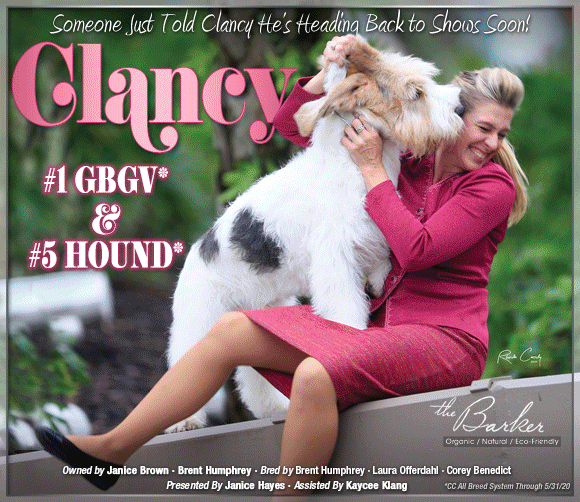
Fortunately, his protégé fared better, and Bea stepped into the big ring to make her choice in 1957. Sabella describes it as a decision that sent shockwaves through the dog world. “Bea had courage. Just think of the dogs in that BIS lineup.” Some of the contenders facing off that night included Harold Florsheim’s Airedale, Westhay Fiona of Harham. The Boxer, Ch. Barrage of Quality Hill, making his second grab for the big prize, was the third consecutive Barrage Boxer to take the group in an era when shows were dominated by top winning Boxers. The most formidable competitor was the legendary Peke, Ch. Chik T’Sun of Caversham. Handled by the indomitable Clara Alford, he racked up 128 BIS and broke through group competition at Westminster three times before taking the big leap to Best in 1960. “They were all top winners,” says Sabella. “Bea was the one who said, ‘I don’t care what these other dogs have done; I think this is the best dog. ‘And she put up this unknown handler from Long Island.”
Breeder/owner/handled by Sunny Shay, 2 ½ year-old, Int. Ch. Shirkhan of Grandeur, was the third generation of her breeding and the first Hound to win Westminster. Canalizo describes the night as, “a benchmark in the dog world that eventually became known as the Cinderella Story in dogs. Many will claim that Sunny’s win that night opened the door of opportunity to everyone as a breeder/owner/handler. It broke every established notion of who, what or how a dog won the biggest prize of all in the sport. I would venture to say in those days there was no betting for the dark horse contender – especially when that ‘horse’s’ lead was held by a plump, youthful woman of regular means and status, who had only just won his first group ever. Yet there she was… standing among the ‘establishment’ holding lots and lots of silver trophies!” Canalizo adds that the entire sport was invigorated by the resulting torrent of media coverage. Commenting on her choice for a reporter, Bea described Shirkhan as, “the soundest mover among the six finalists, a very good showman, and a beautifully balanced hound with correct oriental expression.” Celebrated for his gait, character, and head type, Bea was spot on about Shirkhan’s quality. He went onto earn a BIS at age eight, and again took the breed at the Garden at age nine. “He was fantastic,” says Sabella, “he changed the breed completely. Before Shirkhan, if you didn’t show a black-masked red, forget it, and he had maybe five inches of coat. Sunny would give him a bath, throw him in the crate and go to the show.” Sunny and Shirkhan may have represented the dog show anti-establishment, but history confirmed the wisdom of Bea’s choice. “That win was shocking for a lot of people,” admits Sabella. “But that dog proved himself. He was a great sire and a tremendous influence on the breed.” Shirkhan ultimately produced 43 champions.
Bea’s interest was never confined to mainstream breeds or top winners, which seems quite in keeping with her adventurous spirit and inquisitive nature. “She was so good because she was so open to learning,” says Beauchamp, whose involvement with Bichon Frise had an equally important impact on the dog world. “She had already retired from judging when I got involved with Bichon Frise, but she still wanted to know all about the breed. She had a great thirst for knowledge and willingly shared her knowledge with anyone.”
Canalizo, who exhibited to her as a boy recalls the way she acknowledged a youngster in her ring. “She was generous with subtle comments which, in retrospect, were meant to be constructive (and almost always spot on). As I grew up and expanded my horizons, I was able to develop my own estimation of her exalted ability…and you know what? The perception of her greatness never waned.” He took every opportunity to watch and learn whenever he encountered Bea at shows, club functions, or social gatherings. Bea continued judging after Major Godsol’s death in 1970. Beauchamp admits that he was shocked when she suddenly announced her intention to retire. “I thought it was strange for her to retire so early but she explained that she wanted to retire while she was still respected and doing a good job. She did not want to go down in history as a funny old doddering woman who didn’t know what she was doing in the ring.”
One of her last assignments was the Afghan Hound Club of America National in 1972, held in conjunction with Westminster, which was to be her final appearance in the ring. Canalizo emphasizes that Bea was regarded as one of the foremost authorities in Afghans. “I went second in BBE to Winner’s Bitch and she made it obvious my young bitch was a true contender for the Class and Reserve. I also exhibited another dog we owned as one of the get in the winning of the Stud Dog Class. Lofty recognition for sure! Her decision to cease judging was done with grace and conviction.”
Bea died in 1978 and her loss left an irreplaceable void in purebred dogs. Michael Canalizo concisely sums up her contribution. “I count on one hand the dog people who merit the kind of reverence that she so deserved.” Many people spend a lifetime in this sport. Quite a few earn recognition, but very few leave a legacy that takes it to a new level.
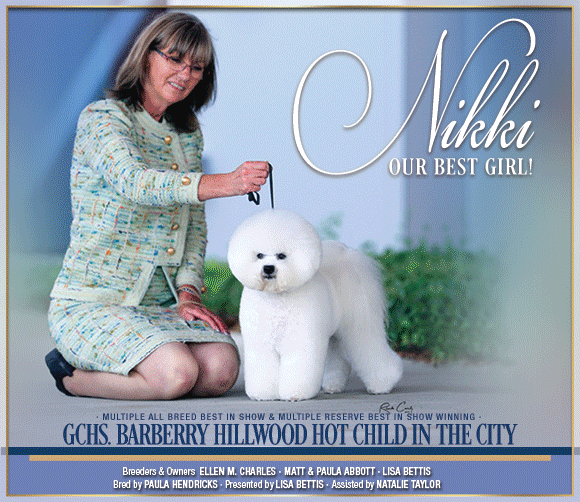
Short URL: http://caninechronicle.com/?p=187962
Comments are closed











